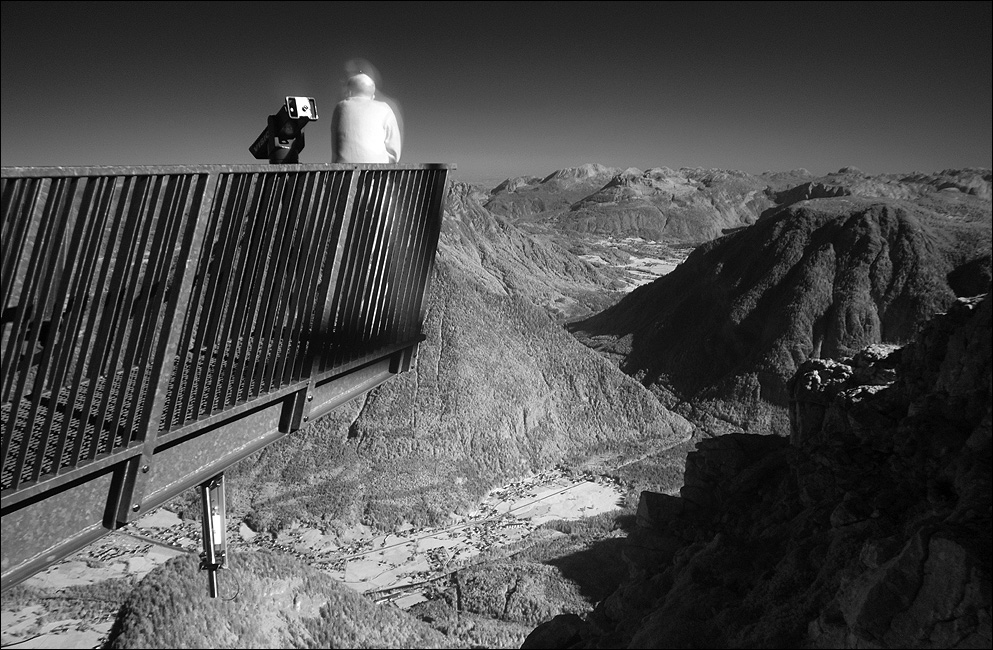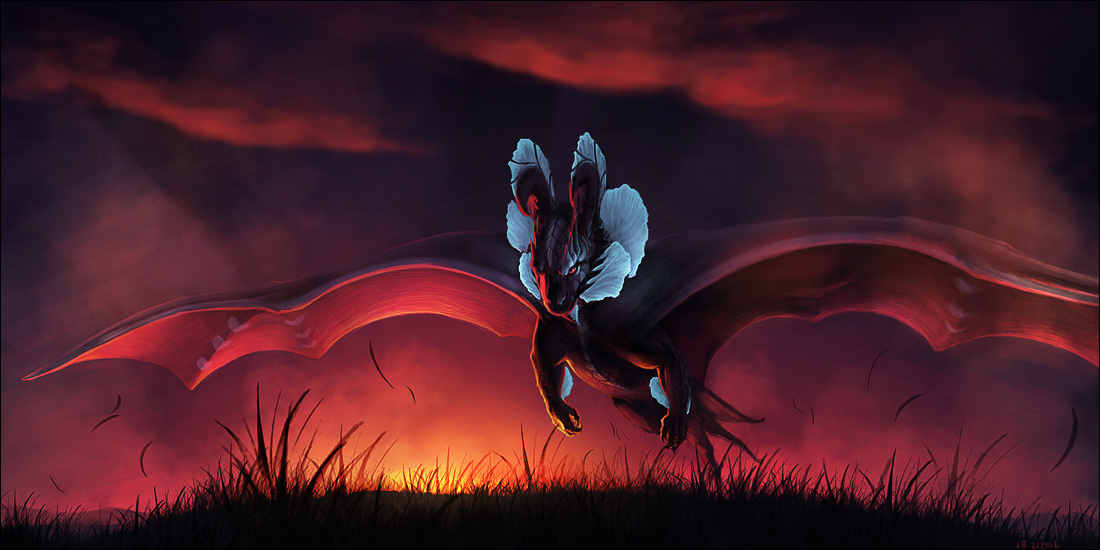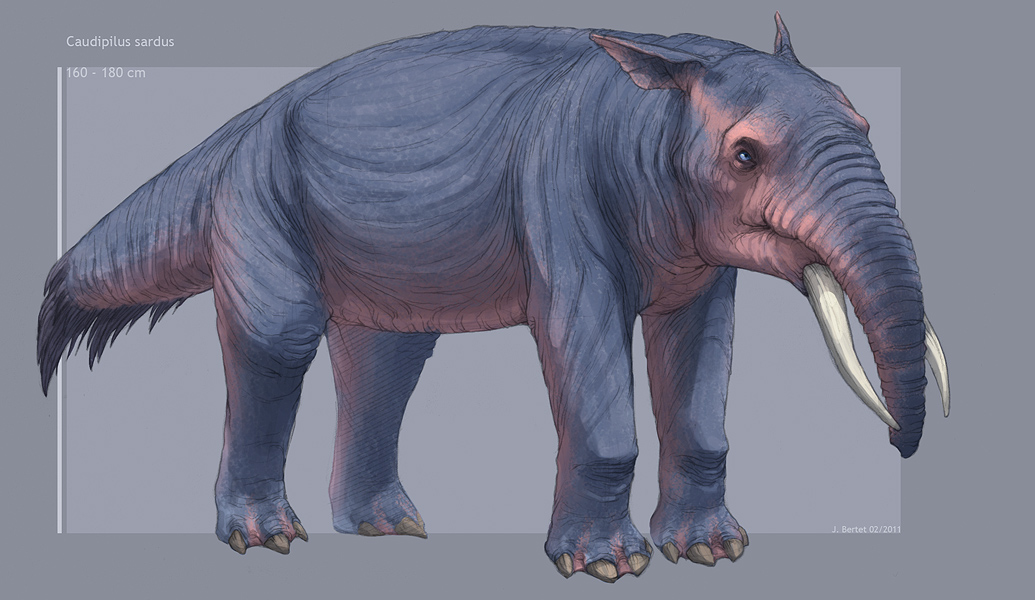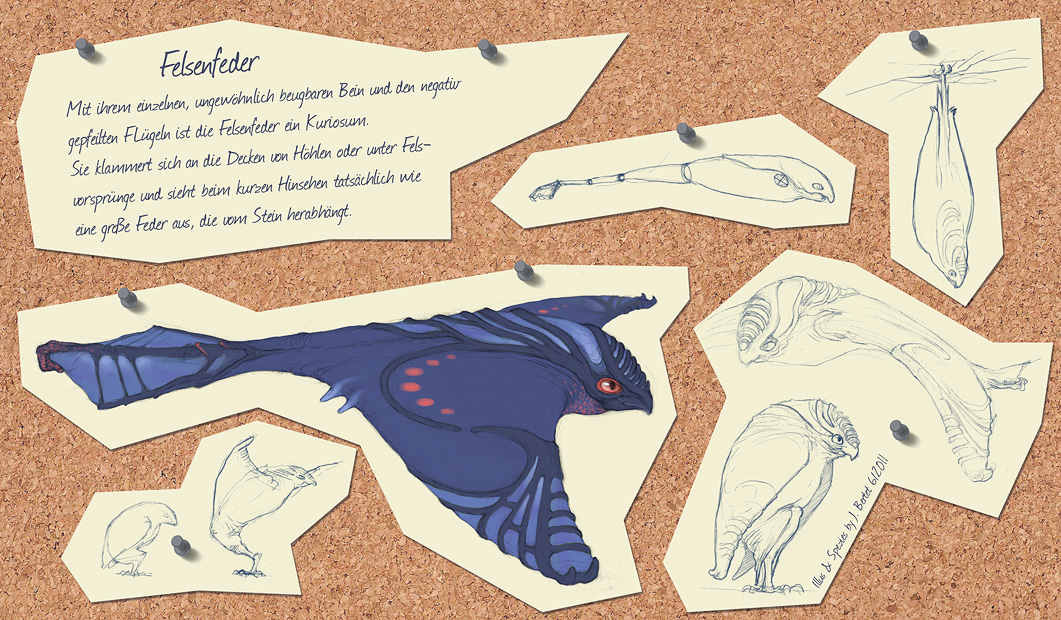Another little something from the same vacation as in the post below. As soon as I spot insects, I can't help but stalk them until I get at least one halfway decent picture. It's a silver-washed Fritillary (German: Kaisermantel), sucking nectar while the fly seems to do the same.
Dienstag, 28. Februar 2012
Mittwoch, 22. Februar 2012
I dream in infrared...
...said Queensrÿche, and they were right. While the elderly gentleman on the "5 fingers" viewing platform atop the Krippenstein (Austria) watches the Dachstein mountains in his native spectrum, the photo was taken in near infrared (>720 nm). Longer wavelengths of light (or electromagnetic radiation in general) become less susceptible to atmospheric scattering, which is why even very distant objects are clearly visible in the picture. The cell walls of plants highly reflect infrared radiation while chlorophyll behaves completely transparent. Subsequently, vegetation appears really bright (up to blinding white) on infrared photographs.
Dienstag, 21. Februar 2012
Childhood characters revisited
Back in 1997, those two guys were among the main characters that starred (and still do) in my biggest project to date. Leilo and Frederik, two averals flying an EN-12. While I invented Leilo for that story, Fred's character had been there since 1994. Still, some other characters would laugh at him for being thought up so late.
My aversion to generic fantasy made me find answers to why his ears are pointed and why the **** guinea pigs pilot aircrafts. Saying it this way makes my stuff sound more retarded than it hopefully is. ^^'
My aversion to generic fantasy made me find answers to why his ears are pointed and why the **** guinea pigs pilot aircrafts. Saying it this way makes my stuff sound more retarded than it hopefully is. ^^'
Donnerstag, 16. Februar 2012
Dance with the dawn
After realizing that I haven't drawn Felvarh in seven years, this came to my mind and I quickly got it out. Cheesy as hell - but fun. Glowing frills don't make it better, however. x) Photoshop, a little over 2 hours.
Mittwoch, 15. Februar 2012
Fictional species: The Lagyll Brushtail (Caudipilus sardus)
While the earliest proboscideans lived in or near water, their evolved descendants specialized in living on firm ground - while so, they retained an everlasting liking towards water. Continuing with Deinotherium, the proboscideans more and more became what we today know als elephants. The second branch, parting from the aforementioned, returned to a water-based lifestyle.
While standing, the Brushtail's trunk does not reach the ground. Feeding on dry land would pose quite an exercise for the animal, but while diving, the trunk makes an excellent plant-grasping device. To further push its swimming abilities, its toes are slightly webbed. The vertically pronounced tail serves as a rudder. At first glance, its hairy tip gives the impression of incomplete shaving, but in fact it is used to determine water flow and speed. As with various water-dwelling mammals, the Brushtail can fold its ears to prevent water from entering.
Dienstag, 14. Februar 2012
Fictional species: The Rock Feather (Ala cautis)
The Rock Feather or Ala cautis is a small species of corioalar bird that dwells in the mouths of caves and near steep cliffs. Its single leg is bent uncommonly and serves as a flexible anchor. The wings are swept in a negative angle which helps maneuvering during slow flight and in narrow spaces. Also, the incident flow of the tail (or, in this case, leg) rudder is improved. The Rock Feather's omnivore diet consists of small insects as well as fruit, berries and seeds. Food is picked with the help of its beak or by stretching out the leg during flight or while hovering in front of the object.
Abonnieren
Posts (Atom)






